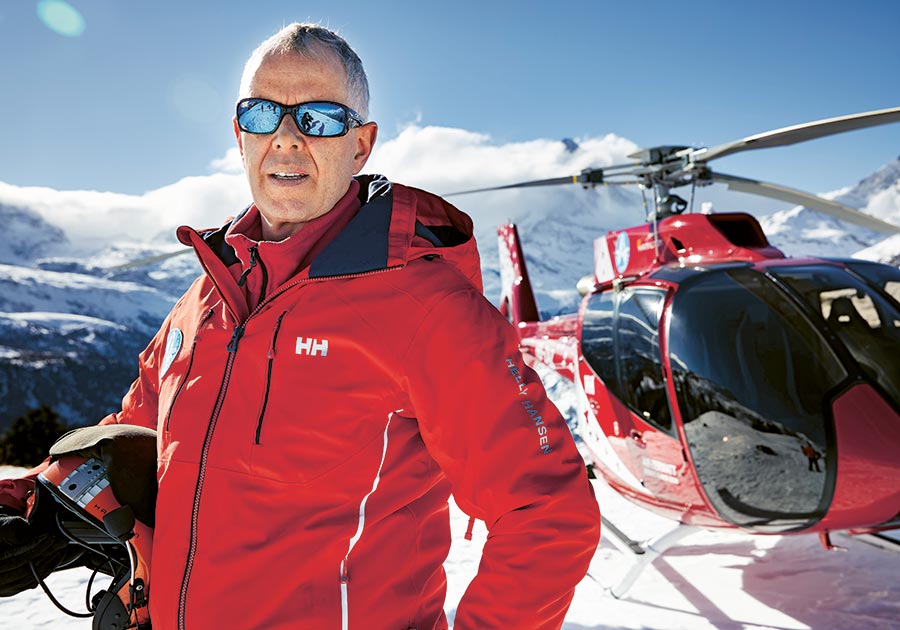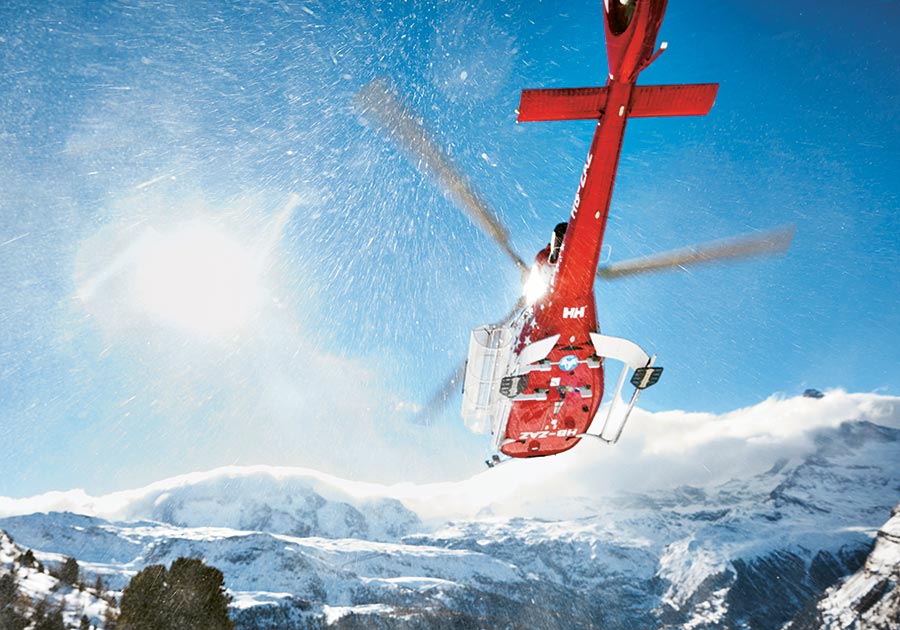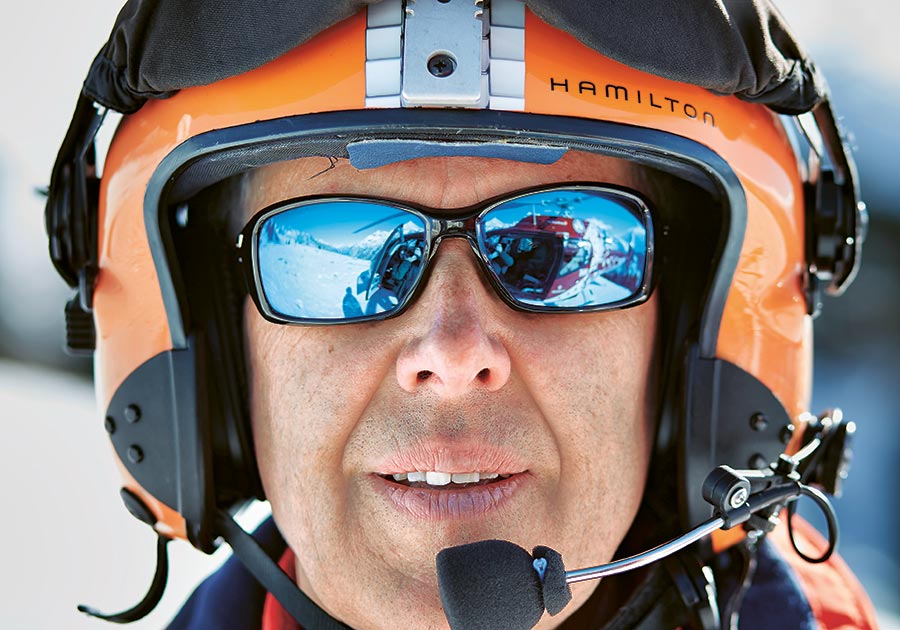Eiger North Face rescue – a worldwide sensation
In its almost 50 years of existence, Air Zermatt has contributed greatly to the advancement of mountain rescue techniques – especially those that accelerate the effort and make it safer for everyone concerned. In this regard, company founder Beat Perren played a pivotal role with his numerous innovations and novel approaches. Above all, the first-ever rescue of mountain climbers on the Eiger North Face with the help of a helicopter and a windlass caused a sensation that reverberated across the globe. “Until then, almost 30 people were needed to climb over the peak and then rappel down to save stranded or injured climbers. That took a long time. With the windlass, the whole exercise can be accomplished today within half an hour,” according to Biner. Air Zermatt also developed a tripod that simplifies the descent into a glacier crevice. This device, too, is now used throughout the world for such purposes.
“There’s still no technological achievement that enables us to get out there at any time of day or night regardless of the weather.”
But despite technological advances like this, there are still limits to mountain rescue operations. “The problems start when you have no other choice than to take a risk,” Biner admits. And it is difficult to determine when that point has been reached. “If you would need to fly underneath an ice overhang in order to get someone off the mountain, then the limit has obviously been exceeded,” offers Biner as an example. In case of doubt, the exfiltration is aborted and an alternative sought. “We’ve already climbed on foot all the way up the Weisshorn as there was no other way of dealing with the situation.” It takes years of experience before risks like this can be assessed prudently. But even then, touchy situations can arise where rescuers are forced to rely on a hefty portion of luck. “Many times, we only realise that fact after the day is done,” says Biner, who can look back on an almost 30-year career as a rescue pilot and himself managed to survive a copter crash.
Keeping pace with innovations
But at times, all help comes to naught – especially when poor weather conditions make deployment impossible. “There’s still no technological achievement that enables us to get out there at any time of day or night regardless of the weather,” Biner states. Switzerland’s Rega air rescue and retrieval organisation, which works closely with Air Zermatt, is pursuing such a vision. But the plans of the Valais heroes are perforce more modest. Nonetheless, they could very well push mountain rescue to the next level: for instance, through their co-development of an entirely redesigned, purpose-specific helicopter; or in the area of emergency medicine, where they are involved in project “Null negativ” which aims to treat victims on-site through the transfusion of whole human blood instead of just blood plasma.
“We put the money from our niche activities into our rescue operation, which these days regularly runs a deficit.”
And along with techniques and technology, Air Zermatt itself has changed dramatically since its founding. The basic concept – i.e. providing an air rescue service – is still the same. But meanwhile, the company has expanded into the niches of passenger transport and “flightseeing”. Another important revenue source these days is air haulage, where avalanche clearing and mountain restaurant supply come into play. And most recently, a training and education centre for know-how transfer has been added to Air Zermatt’s range of offerings. “We put the money from those activities into our rescue operation, which these days regularly runs a deficit due to its cost-intensiveness,” Biner explains. Thanks to this diversification, the company is in good enough shape to invest in the construction of a new base in Zermatt. In response to the question as to how he imagines the future of air rescue, Biner says: “We don’t know where the journey will be taking us.” But conceivable is the use of drones or alternative drive systems for helicopters. Those technologies are still in their infancy, but “it is of decisive importance that we keep pace with them.”







